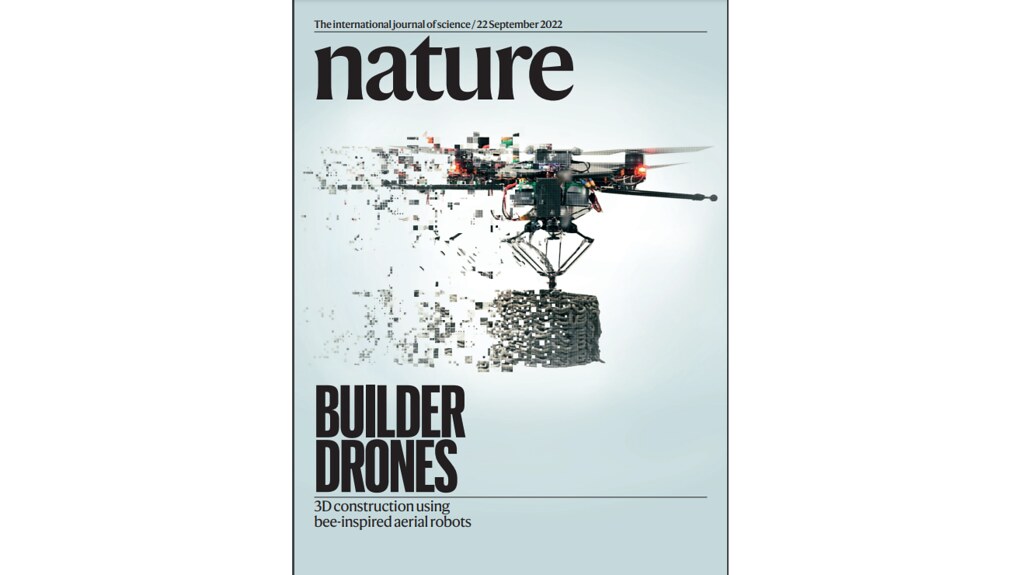The latest issue of Nature features two research projects carried out at Bath, including the front cover story.
Research into new flying drones that can build or repair structures in hard-to-access places was selected as the international journal's lead story.
The team included Dr Wenbin Li Department of Computer Science who helped program the drones, and researchers from the Department of Architecture & Civil Engineering including Dr Richard Ball, Dr Paul Shepherd, Dr Barrie Dams, Dr Chris Williams and Dr Shamsiah Awang Ngah, who developed the cement-like material used by the drones. They say the drones could reduce the cost and risks associated with construction in future.
Read the paper Aerial additive manufacturing with multiple autonomous robots here.
A paper on the atmospheric effects of the eruption of the Hunga Tonga volcano in January also features in the issue.
Led by Dr Corwin Wright, a Royal Society University Research Fellow based in the Centre for Space, Atmospheric and Oceanic Science and the Department of Electronic & Electrical Engineering, the research found that the eruption was one of the most explosive volcanic events of the modern era, creating waves that reverberated around Earth and reached 100km into the ionosphere.
The project combined extensive satellite data with ground-level observations to show that the eruption was unique in observed science in both its magnitude and speed, and in the range of the fast-moving gravity and atmospheric waves it created.
Read the paper Surface-to-space atmospheric waves from Hunga Tonga–Hunga Ha’apai eruption here.

